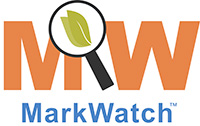What is a Trademark?
What Is a Trademark?
A trademark distinguishes the goods or services of one enterprise from those of otherenterprises, according to the World IntellectualProperty Organization (WIPO). Intellectual property (IP) includes creations of the mind, such as inventions; literary and artistic works; designs; and symbols, names and images used in commerce.
Trademarks date back to the earliest circulation of goods; for example potter’s marks have been found on ancient Roman and Greek artifacts. Today, we encounter trademarks nearly everywhere; on television, billboards and social media; in stores and on products we use. They help establish brand identification — from the company name to the logo and product tagline — and prevent others from using one company’s brand ID to market similar things.
The United States Patent and Trademark Office (USPTO) explains that trademarks are one legal form of intellectual property protection. Patents and copyrights are also protected by law. In order to obtain trademark protection in the United States, individuals and businesses must apply to the USPTO to register a trademark and must maintain that trademark registration. This involves filing the correct forms, paying fees and, in many cases, working with a patent attorney. Most registered trademarks are valid for 10 years and can be renewed indefinitely.
As WIPO points out, the purpose of protecting intellectual property is to enable people to earn recognition or financial benefit from what they invent or create. By striking the right balance between the interests of innovators and the wider public interest, the IP system aims to foster an environment in which creativity and innovation can flourish. A registered trademark provides the owner an exclusive right to the use of the registered trademark, which can be licensed to another party for use in return for payment. Registration provides legal certainty and reinforces the position of the right holder in case of litigation.
In some situations, protected trademarks are frequently, but not legally used as generic terms. Some examples include:
Trademarked Name
AstroTurf
Band-Aid
Crock-Pot
Dumpster
Google
Hoover
Hacky Sack
Hula hoop
Jacuzzi
Generic Name
Artificial Turf
Adhesive Bandage
Slow cooker
Front Loader Waste Container
Internet Search Engine
Vacuum Cleaner
Footbag
Toy Hoop
Hot Tub or Whirlpool Bath
Trademark Owner
Monsanto Company (formerly) AstroTurf, LLC
Johnson & Johnson
Sunbeam Products
Dempster Brothers, Inc.
Google Inc.
Hoover Company
Wham-O
Wham-O
There are also situations in which trademarks lost legal protection as they became used by consumers to the point where the trademarks were considered to be the common name of a product or service. Among trademarked items that were determined in court to have become generic.
Trademarked Name
Aspirin
Dry Ice
Laundromat
Thermos
Trampoline
Videotape
Generic Name
Acetylsalicylic Acid
Solid form of Carbon Dioxide
Coin Laundry Shop
Vacuum Flask
Trampoline
Trademark Owner
Bayer
Dry Ice Corporation of America
Westinghouse
Thermos GmbH
Griswold-Nissen Trampoline & Tumbling Company
Sources
USPTO.gov – trademark
The History and Development of Trademark LawWorld Intellectual Property Organization (www.wipo.int)
